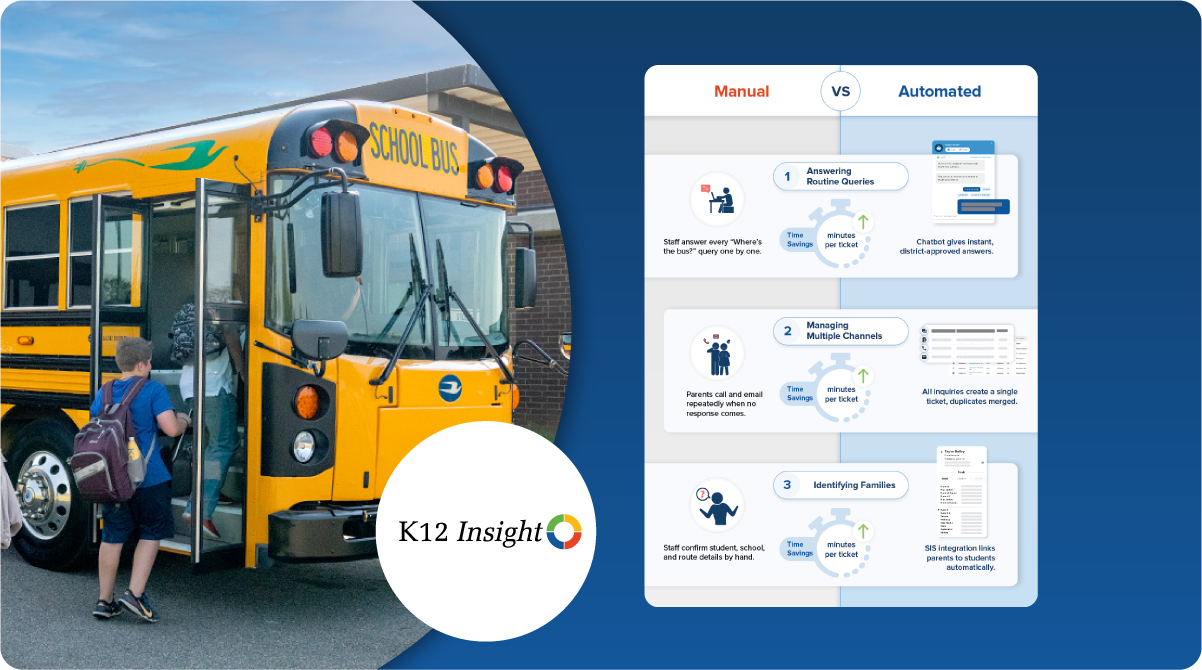News & Blog
The K12 Insight Blog


From Let's Talk to Onflo
The same trusted customer service platform, now built for every part of your district.

Service Without Silos: Arlington ISD’s Unified Approach
Arlington ISD is uniting departments on one service platform to deliver prompt, accurate, and helpful responses.

How Districts Can Shift Gears In Their Transportation Customer Service with Automation
Streamline how your district handles customer service and support for its transportation department.

Raising the Bar: One Louisiana District's Formula for Modernizing Service Delivery with Heart
At NSPRA 2025, Caddo Parish's Mary Nash-Wood shared how the district is raising the bar for customer service.

K-12 IT Readiness Checklist: Is Your District Ready for Back to School?
Back-to-school is one of IT’s busiest seasons. Use this checklist to align systems, improve support, and start the year strong across your district.

How Kansas City Public Schools Used Customer Service to Rebuild Trust—and Passed Its First Bond in 58 Years
Read how Kansas City Public Schools rebuilt trust—and made district history.

6 Summer Fixes for a Smooth Start in August with Let’s Talk
Boost customer service and operational efficiency this summer. Use these 6 Let’s Talk tips now to save staff time and start the school year strong.

Efficiency Is the Key to Trust and Engagement
This is the second in our series on how districts can use summer to drive efficiency, reduce costs, and build community trust.

3 Summer Priorities for District Efficiency
This is the first in a three-part series on how districts can use summer to boost efficiency, reduce costs, and build trust.
